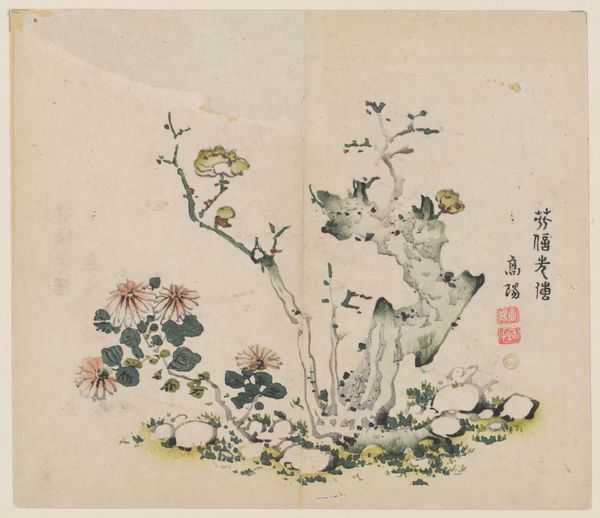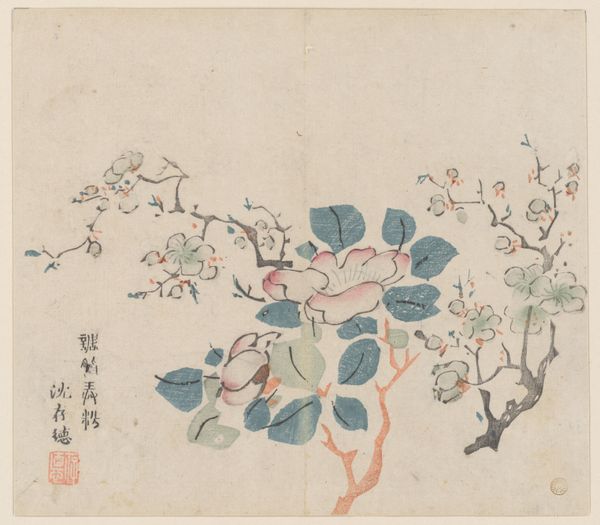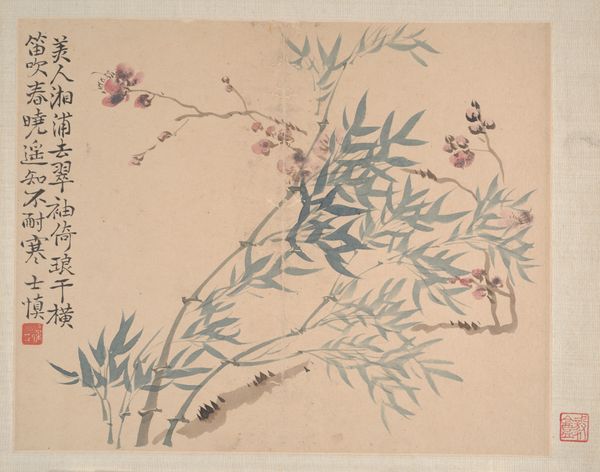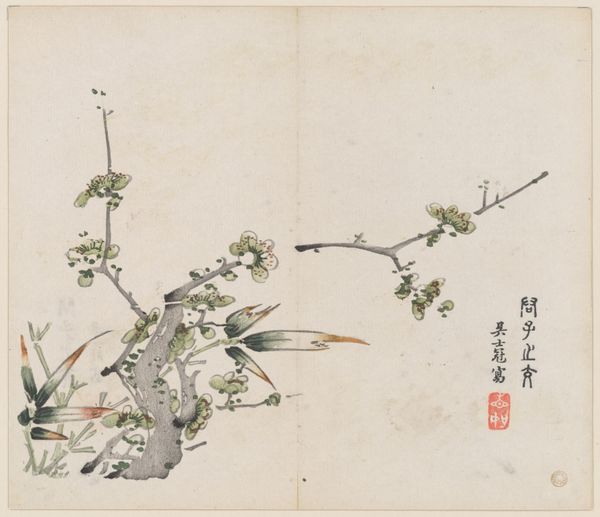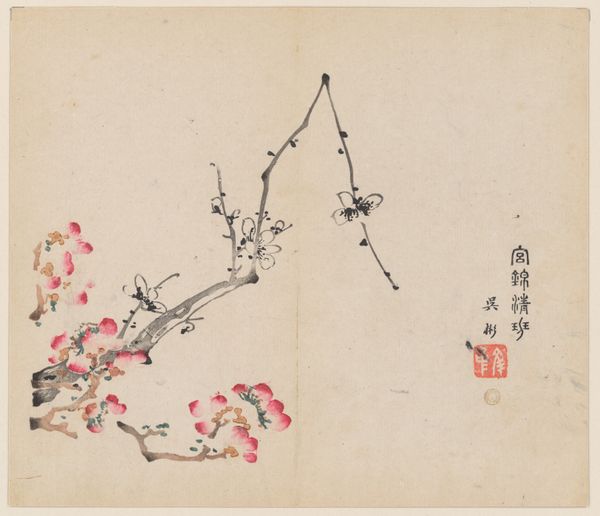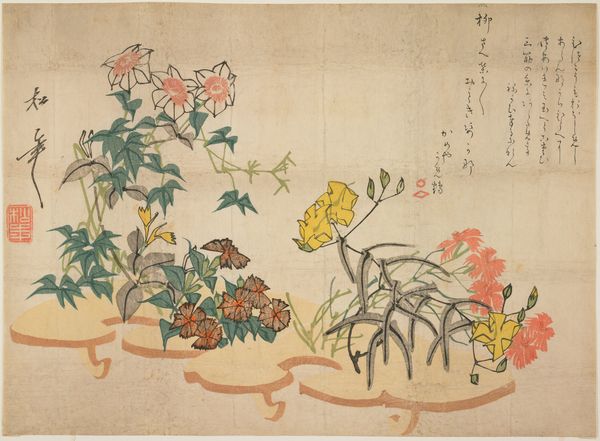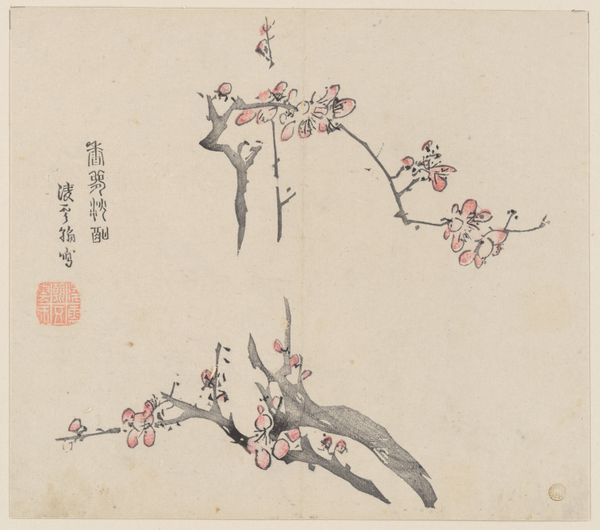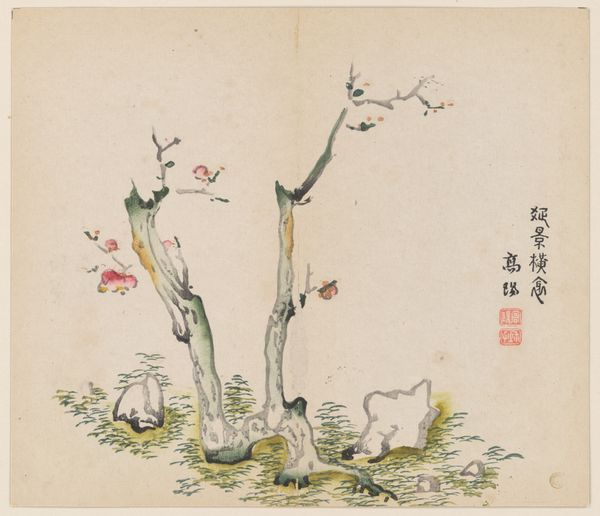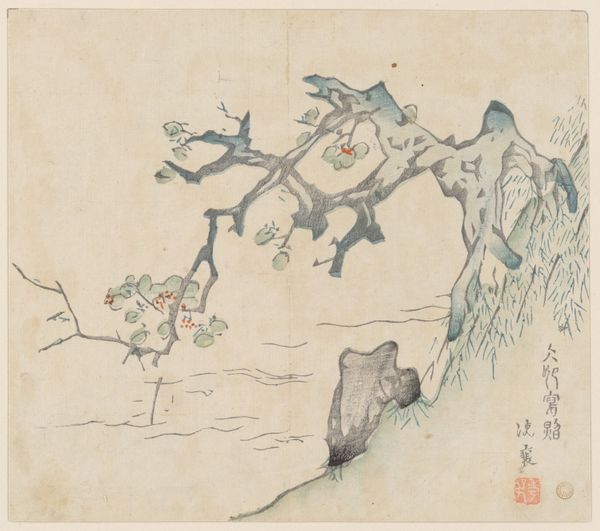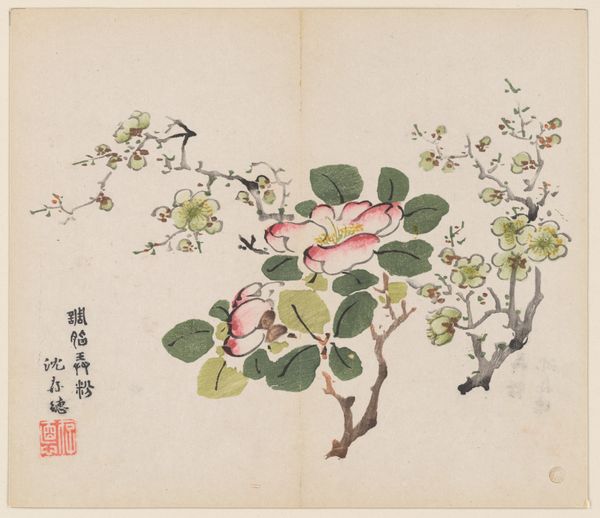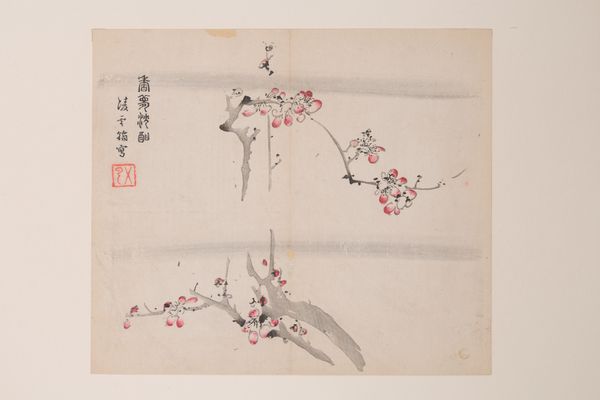
Page from the Ten Bamboo Studio Manual of Painting and Calligraphy 1633
0:00
0:00
painting, print, paper, ink
#
ink painting
#
painting
# print
#
asian-art
#
ukiyo-e
#
paper
#
ink
Dimensions: 9 15/16 x 11 9/16 in. (25.2 x 29.4 cm)
Copyright: Public Domain
Curator: This delicate print before us is a page from the Ten Bamboo Studio Manual of Painting and Calligraphy, dating back to 1633. It’s attributed to Hu Zhengyan. The manual itself was a revolutionary example of color printing. Editor: Immediately, I notice a quiet sense of understated elegance. The off-white background really lets the floral elements emerge. There’s a lovely balance between detail and suggestion. Curator: Indeed, the manual marked a significant moment in the accessibility of art education, right? These were essentially pattern books for aspiring artists, disseminating styles and techniques widely. Its very existence reshaped artistic practices beyond elite circles. Editor: Absolutely. What strikes me, looking closer, is how this work challenges notions of originality and authorship. We see the circulation of imagery not as a dilution but as a kind of cultural conversation— a visual commons where ideas are shared, reinterpreted, and ultimately democratized. This makes me wonder, where and when would prints like this appear, who was sharing them, and what would they have been copying or elaborating from it? Curator: You're hitting on something vital. This manual wasn’t about individual genius but about participation in a broader artistic tradition. Furthermore, the specific choice of subjects like bamboo, plum blossoms and pine branches held symbolic weight. What does that represent? Editor: Ah, it symbolizes resilience, longevity, and perseverance – qualities highly valued in Confucian ideals, and I assume during turbulent times. The placement of the calligraphic elements is also significant, right? The characters and the red seal act as both textual and visual commentary and reinforce a broader narrative. It also anchors the image to its role and intended audience in 17th-century China. Curator: Exactly. Even the act of printing itself had social implications, allowing for standardized visual language and therefore promoting societal cohesion and reinforcing those value systems you identified. So many considerations go into a single-page design. Editor: Considering all this, the print goes far beyond mere decoration. This small page offers a window into the cultural and sociopolitical values of its time, which, of course, demands that we be ever vigilant when thinking about historical prints of any kind. Curator: And through understanding that context, we can begin to deconstruct the political intentions behind visual rhetoric as we encounter this imagery today. Editor: Well, I’m glad we considered that because now, more than ever, understanding the legacy of visual rhetoric seems quite essential for our contemporary challenges.
Comments
No comments
Be the first to comment and join the conversation on the ultimate creative platform.
